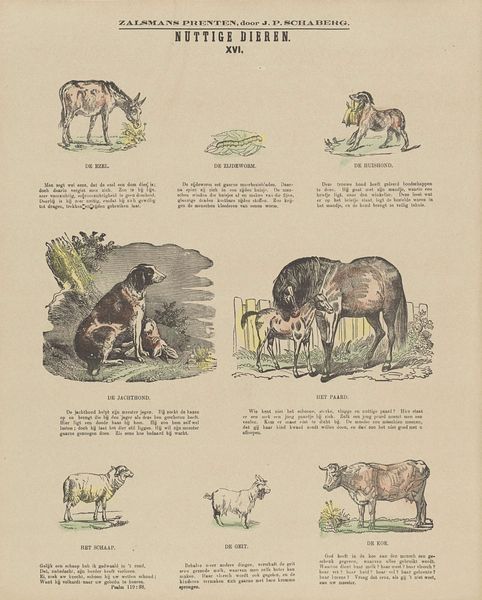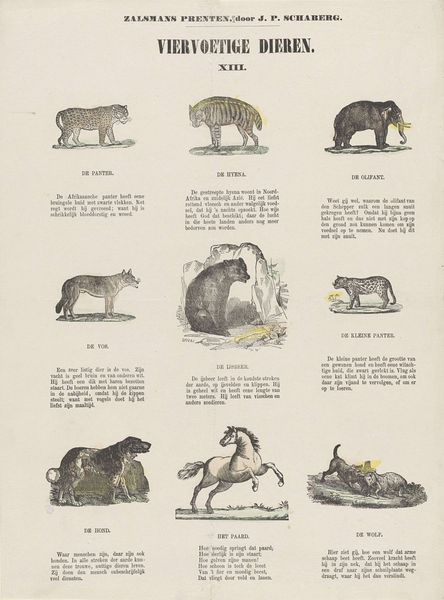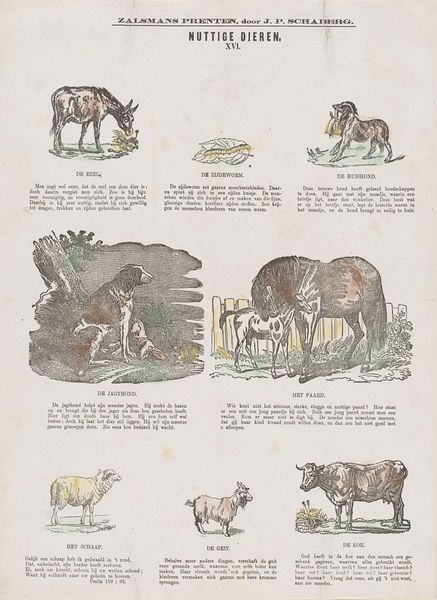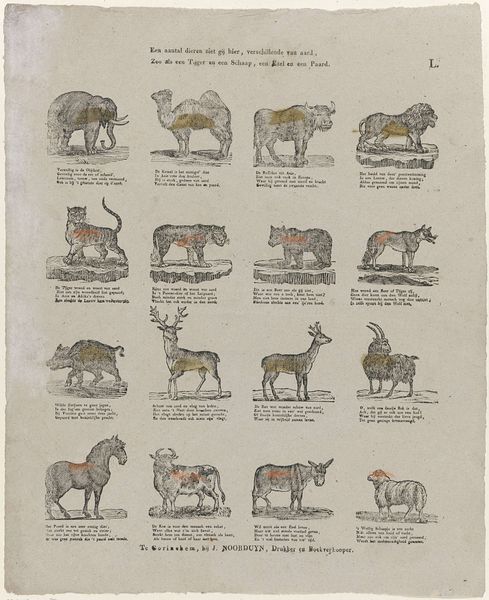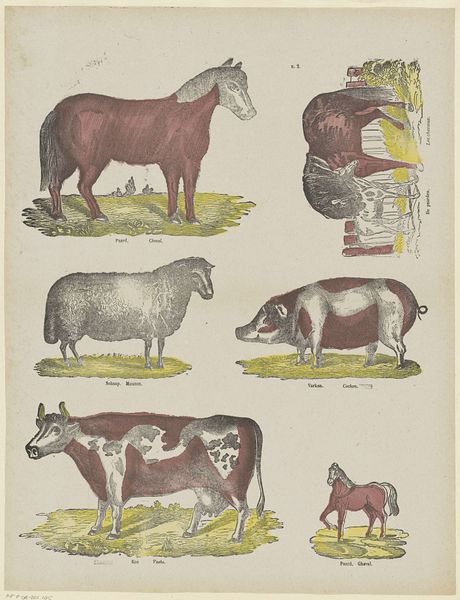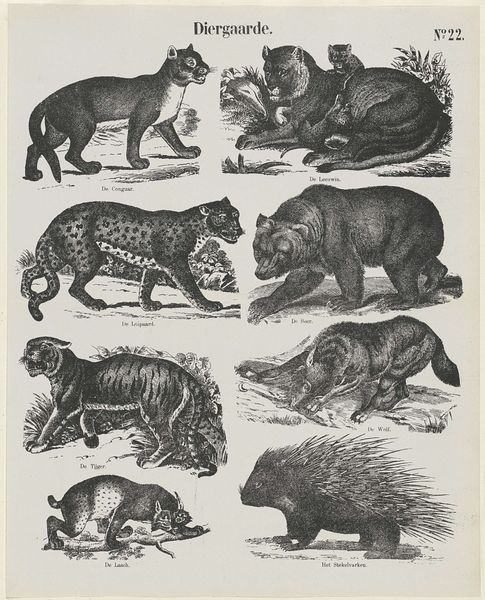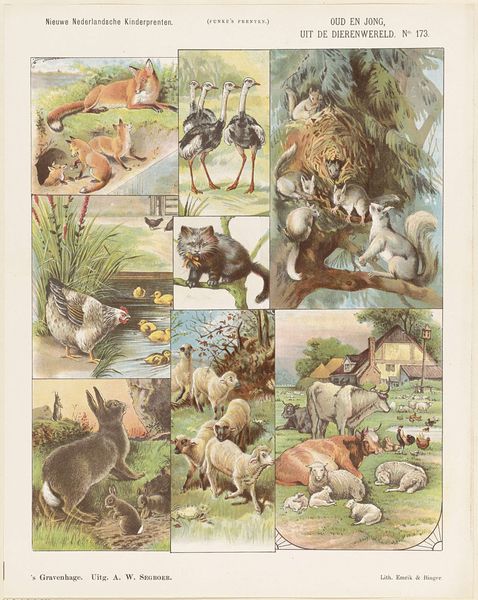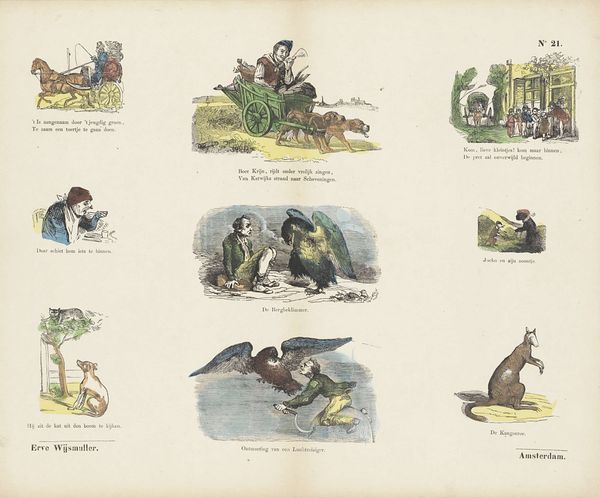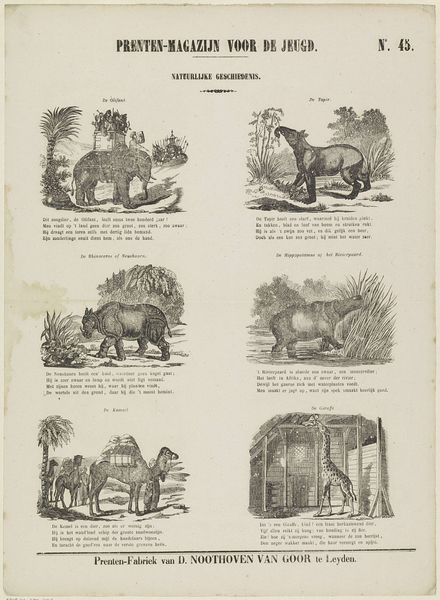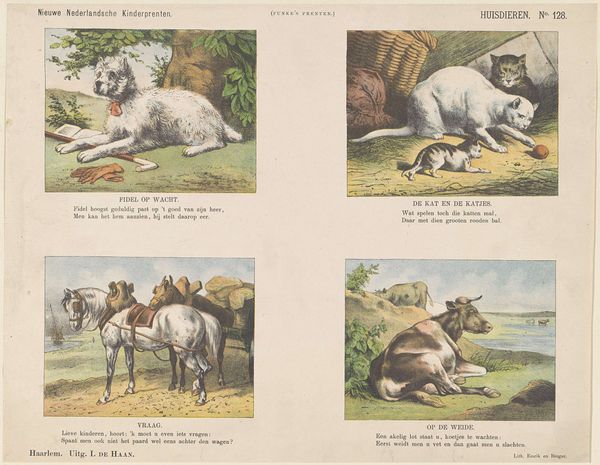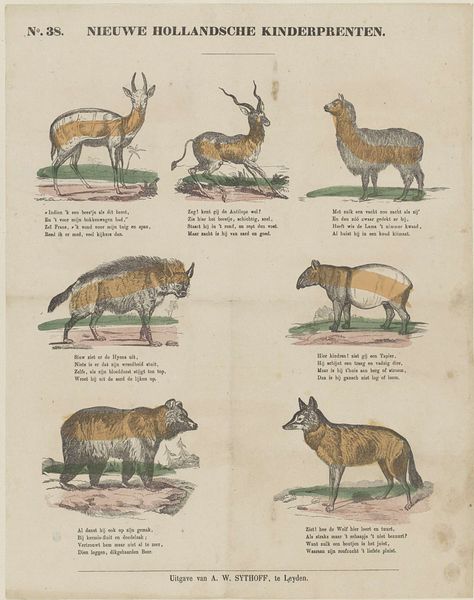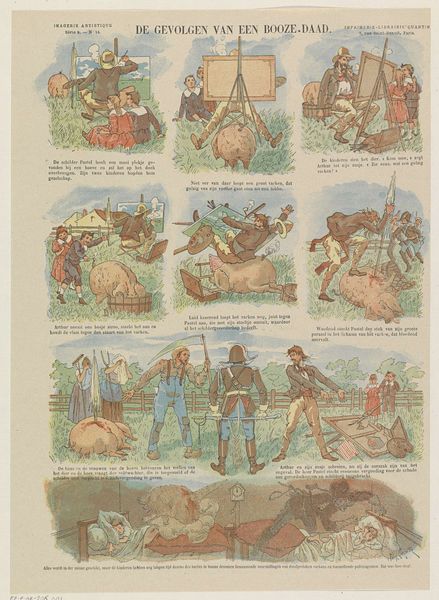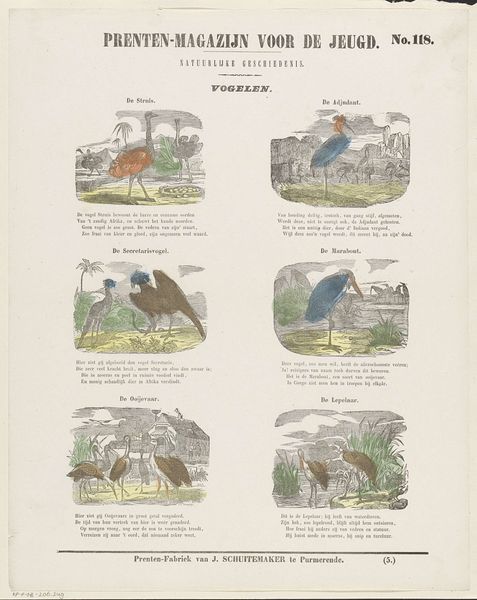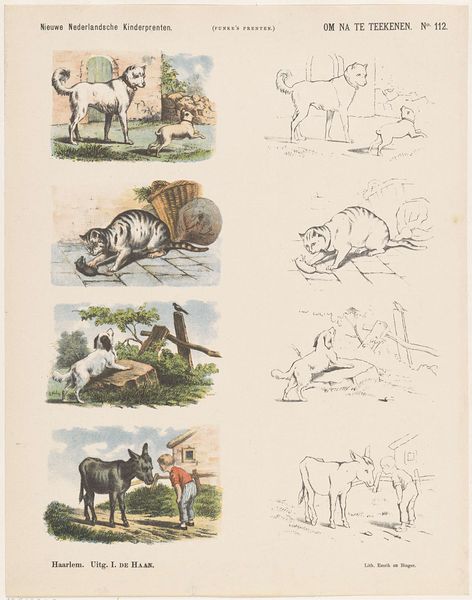
print, engraving
#
animal
# print
#
genre-painting
#
naturalism
#
engraving
Dimensions: height 428 mm, width 345 mm
Copyright: Rijks Museum: Open Domain
Curator: So, here we have "Wilde Dieren," or "Wild Animals," by Gerhardus Philippus Zalsman, created between 1869 and 1882. It's a print, an engraving showcasing a bunch of different animals in these little vignette boxes. What strikes you first about this rather charming, old-fashioned menagerie? Editor: Well, it definitely has this vintage textbook feel, almost like a page from a natural history guide. I'm curious, what kind of cultural ideas about "wildness" were in play when Zalsman made this? Curator: Ah, that's the heart of it, isn’t it? This piece hails from an era of exploration and classification. The Victorians, particularly, were obsessed with cataloging the natural world, displaying their understanding and… frankly, their dominance over it. See how each animal is neatly framed, presented almost like specimens? It speaks to a desire to order and control the seemingly chaotic "wild." Notice how each is paired with its Dutch name. Does it read as informative, objective, or romantic to you? Editor: Informative at first, but definitely leaning into a slightly romanticized idea. It’s like they’re trying to make these animals accessible and… non-threatening. Curator: Precisely! They’re made palatable for a largely urban audience, divorced from the realities of encountering, say, a panther! How fascinating! I find myself thinking about the animals that did NOT make it into the composition and what parameters would allow a species admittance. Editor: That's such an interesting question - Who decides what is and isn't "Wilde," and why? Thanks, I'm definitely seeing more than just cute animals now. Curator: Wonderful. And I think the charm lies in its artifice. It presents the wild, but in a decidedly civilized, controlled, and frankly, human way. It really is all quite amusing.
Comments
No comments
Be the first to comment and join the conversation on the ultimate creative platform.
